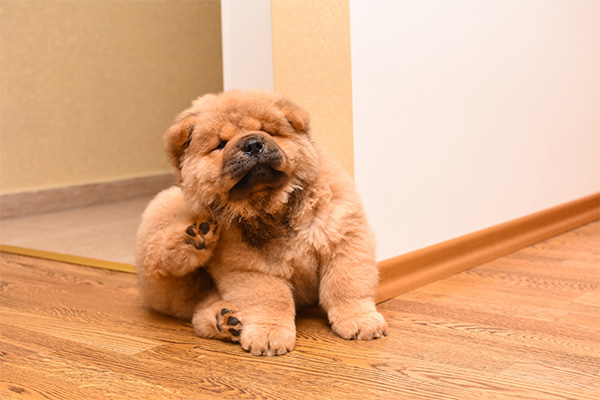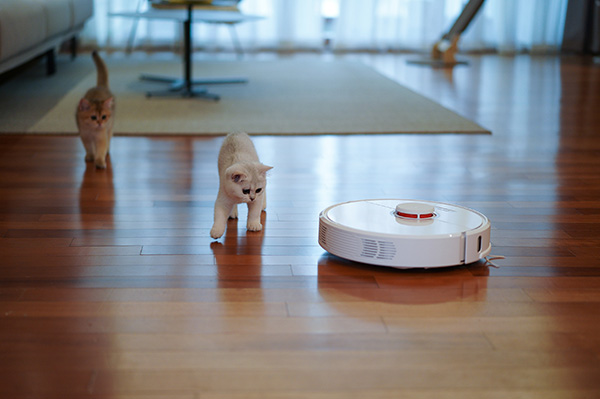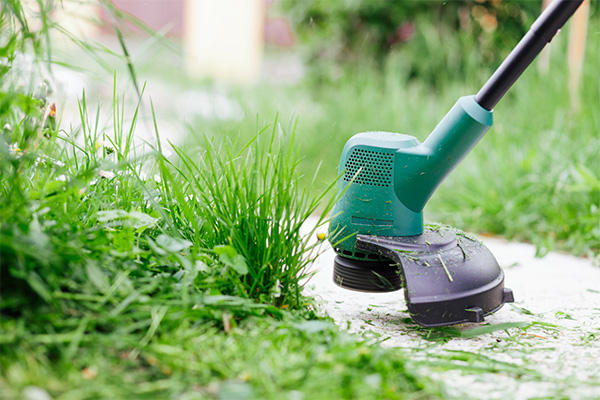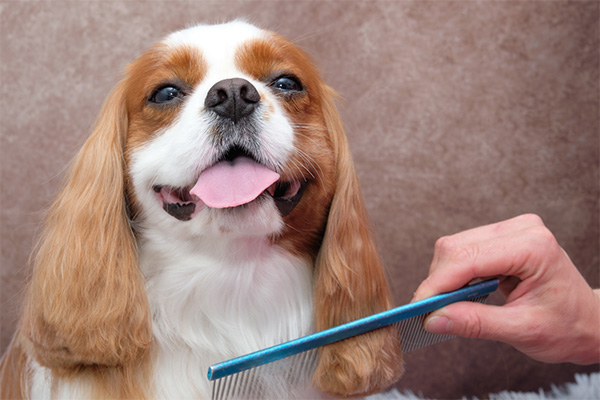Tiny but mighty fleas can quickly become a major nuisance in your home, causing discomfort for both you and your furry companions. These tiny insects can transform your tranquil home into a battlefield of irritation and frustration. Not to mention, they are bitters, and flea bites can be dangerous for both your family and pets.
Picture a home where you, your family, and your pets can roam freely without the fear of tiny, relentless biters lurking around every corner. Create a haven free of fleas, allowing you to enjoy the comfort and peace you rightfully deserve. It's time to take action and reclaim your space.
In this blog, we will share how to get rid of fleas. So say farewell to the irritation, discomfort, and frustration that fleas bring and hello to a peaceful, pest-free dwelling where you, your family, and your furry companions can bask in comfort once more.
How To Identify Fleas
Identifying fleas in your home is crucial for prompt and effective eradication. Keep a sharp eye out for small, reddish-brown insects, about 1-2 millimeters in size, typically found in areas where pets frequent.
Fleas are skilled jumpers and may appear as tiny dark specks darting around, especially in your pets' fur. Look for flea dirt, which resembles black pepper flakes and is actually flea excrement, often found in pet bedding or on the floor. Frequent scratching, visible bite marks on pets or yourself, and the presence of small, itchy red bumps can also be signs of a flea infestation. Early detection is key to successful flea removal.

Why Do I Have Fleas?
Pets as Carriers: One of the most common ways fleas infiltrate homes is through our beloved pets. Dogs and outdoor cats, especially those that roam outdoors or interact with other animals, often become unwitting hosts for fleas. These tiny insects latch onto your pets' fur and hitch a ride into your living space.
Wildlife Intrusion: Fleas don't discriminate when it comes to hosts. They can also be introduced to your yard or home by local wildlife, such as squirrels, raccoons, or rodents. Fleas may jump off these animals and establish themselves within your living environment.
Resurgence from Previous Infestations: Fleas are notorious for their resilience. Even if you've successfully battled a flea infestation in the past, dormant flea pupae can lay low for months, only to reemerge when environmental conditions become favorable once more, leading to a fresh infestation.
Neighboring Nuisances: In densely populated areas like apartment complexes or closely spaced homes, fleas can migrate from one residence to another. They can travel through wall voids, shared spaces, or common areas, making it challenging to pinpoint the source of the infestation.
Outdoor Origins: Fleas can originate from your yard or garden, particularly if these outdoor spaces provide ideal breeding conditions. Shady, moist areas can become flea hotspots, and these insects can easily make their way indoors.
Secondhand Items: Fleas don't discriminate when it comes to hitching a ride. Used furniture, rugs, or clothing can harbor flea eggs or larvae, introducing them to your living space when you bring these items home.
Unwelcome Visitors: Even guests can unwittingly contribute to a flea problem. Fleas can hitch a ride on visitors' clothing or belongings; without realizing it, these pests can be transported into your home.

How To Get Rid Of Fleas Indoors
Treat Your Pets
If your source of fleas is coming from your pet, treating your pet is the first line of defense against fleas. Flea infestations stem from neglected pets, leading to a rapid dissemination of these pests throughout the household.
Seek guidance from your veterinarian to determine the most suitable flea preventatives or treatments for your furry companions. These treatments can include topical solutions, flea shampoo, oral medications, flea collars, and brushing using a flea comb.
Regularly administering these treatments disrupts the flea life cycle by killing or preventing fleas from reproducing on your pets.
Vacuum Thoroughly
Vacuuming is a powerful weapon against fleas, as it helps remove fleas and their life stages from your home. Fleas and their eggs may be present in carpets, rugs, upholstery, and various soft surfaces. Vacuuming physically removes adult fleas and picks up eggs and larvae, preventing their development into biting adults.
Dispose of Vacuum Contents
Proper disposal of vacuum contents is crucial to prevent fleas from re-infesting your home. Empty the contents of the vacuum bag or canister into a sealed plastic bag promptly after vacuuming. This prevents fleas from escaping and ensures their containment.
Launder Bedding and Linens
Bedding, linens, and pet beds are common hiding spots for fleas. Laundering these items in hot water with detergent can effectively eliminate fleas and their eggs. The high temperatures effectively eradicate these pests, ensuring a flea-free environment for you and your pets to rest.
Consider Steam Cleaning
Steam cleaning is an excellent method to eliminate fleas from carpets, rugs, and upholstered furniture. The heat steam generates effectively kills fleas, ranging from eggs to adults, at all life stages. Steam cleaning also helps sanitize and freshen your living spaces.
Use Indoor Flea Treatments
Indoor flea treatments like sprays or foggers are formulated to target fleas within your home. These products incorporate insecticides designed to exterminate adult fleas and their offspring. Adhering to the manufacturer's instructions is crucial to ensure safety and effectiveness.
Alternatively, you can DIY flea spray using ingredients you may have in your home. DIY flea sprays can be effective in helping to kill fleas and control infestations in your home. These sprays typically utilize natural ingredients, which are safer for your family and pets than chemical pesticides.
Here are some homemade flea spray recipes for you to experiment with:
Vinegar and Water Spray:
Combine equal parts of white vinegar and water in a spray bottle.
Include a few drops of essential oil, such as lavender or peppermint (optional for a pleasant scent).
Shake the bottle well and spray it on pet bedding, carpets, and areas where fleas are likely to hide.
How it works: Vinegar is acidic and can help kill adult fleas and disrupt their life cycle. It also acts as a repellent. Essential oils like lavender or peppermint can enhance the flea-repelling properties of the spray.
Lemon Spray:
Slice a lemon and place it in a pint of water.
Boil the water and lemon slices for a few minutes.
Let the mixture steep overnight.
Place the solution into a spray bottle and use it to spray on your pet's bedding and throughout your living space.
How it works: The natural citrus scent of lemon is known to repel fleas. Additionally, the acidity of lemon can help kill fleas and their larvae.
Salt Spray:
Dissolve salt in warm water, using approximately 2-3 tablespoons of salt per gallon of water.
Allow the solution to cool, and then transfer it to a spray bottle.
Spray it directly on areas where fleas are present, such as carpets and upholstery.
How it works: Salt is abrasive to flea larvae and can dehydrate and kill them. This spray can be especially effective when used in conjunction with vacuuming.
Dish Soap Spray:
Combine a few drops of dish soap with warm water in a spray bottle.
Spray the mixture on fleas or flea-infested areas.
Allow it to sit for a few minutes, then wipe or rinse it away.
Target Flea Hotspots
Fleas tend to congregate in specific areas, such as pet resting spots, baseboards, and cracks in flooring. By focusing flea treatment on these flea infestations, you maximize the chances of eliminating fleas where they are most active. Thoroughly treating these areas ensures a comprehensive approach to flea removal.
Outdoor Flea Prevention
Treating your outdoor areas, especially if you have a yard, is essential to prevent re-infestation. Seek advice from a pest control professional to identify the most effective outdoor treatment options tailored to your specific situation. Treating your yard can help break the flea life cycle and reduce the risk of new infestations.
Maintain Regular Cleaning Habits
Consistency is key in flea prevention. Continuing your routine cleaning and vacuuming practices helps ensure that any fleas introduced into your home are promptly removed. Regular maintenance reduces the likelihood of a resurgence of the infestation.
Consult a Pest Control Professional
If your efforts to get rid of fleas prove insufficient, don't hesitate to seek professional help. Professionals in pest control possess the expertise, experience, and specialized treatments required to address severe or persistent flea infestations effectively.
To kill all the fleas, patience and consistency are the key. No chemical can kill flea pupae. However, if you follow the steps above, you can get rid of fleas in your home.

How To Get Rid Of Fleas Outdoors
Clear Debris and Clutter
Fleas thrive in dark, cluttered areas with ample hiding spots. You eliminate potential flea-hiding places by removing debris, leaf piles, and unnecessary clutter from your yard. This step makes the environment less hospitable for fleas.
Mow and Trim Lawns
Tall grass and overgrown vegetation provide ideal hiding spots for fleas. Consistently mowing and trimming your lawn and vegetation establishes a less favorable environment for these pests. It also exposes fleas to sunlight, which can help kill them.
Prune Overhanging Branches
Overhanging branches and bushes near your home can serve as access points for fleas to drop onto your property. Reducing the length of these branches and bushes decreases the chances of fleas invading your outdoor area.
Use Diatomaceous Earth
Diatomaceous earth (DE) is an organic, non-toxic powder that functions as a desiccant, dehydrating and killing fleas upon contact. Sprinkle DE in areas where fleas are likely to hide, such as under shrubs, in shaded spots, and around pet resting areas. DE effectively eliminates fleas while being safe for humans and pets.
Consider Nematodes
Beneficial nematodes are minute organisms that parasitize and eliminate flea larvae in the soil. These tiny predators are a natural and eco-friendly solution to control flea populations in your yard. Follow the instructions provided to apply nematodes to your outdoor areas.
Use Flea-Repelling Plants
Certain plants, like lavender, mint, and rosemary, naturally repel fleas with their scents. Planting these herbs and flowers in your garden or placing potted versions around outdoor living spaces can deter fleas from infesting those areas.

How to get rid of your pet’s fleas
Flea infestations can result in discomfort and health problems for your pet. Observe for signs such as frequent scratching, biting, or licking, as these may indicate the presence of fleas. Additionally, you might observe small black specks, referred to as flea dirt, on your pet's fur. To inspect for fleas, employ a fine-toothed flea comb, thoroughly combing through your pet's fur, with special attention to areas such as the neck, tail base, and behind the ears.
If you confirm that your pet has fleas, it's important to isolate them from other pets in your household to prevent the flea infestation from spreading. Keep the affected pet in a separate area until the fleas are eliminated.
Seek advice from your veterinarian to identify the most appropriate flea control product for your pet. They can recommend topical treatments, oral medications, or flea collars tailored to your pet's age, size, and health. Follow your veterinarian's instructions carefully, including the correct dosage and application method, to ensure effective flea control. Here are some ways to help get rid of fleas in pets:
Bathe Your Pet: Give your pet a flea bath using a specialized flea shampoo. Make sure to choose a shampoo formulated for your pet's species (e.g., dogs or cats) and size. Follow the instructions on the shampoo label, lathering the product thoroughly and rinsing your pet's coat completely. This helps remove fleas and soothes your pet's skin.
Use a Flea Comb Regularly: After your pet's bath, use a fine-toothed flea comb to comb through their fur. This helps to remove any remaining fleas, flea eggs, or flea dirt. Comb carefully, paying attention to areas where fleas commonly hide, like around the neck and base of the tail.
Wash Bedding and Toys: Fleas have the ability to conceal themselves in your pet's bedding, blankets, toys, and other belongings. Launder these items in hot water with a detergent to kill fleas and flea eggs. Regularly cleaning and sanitizing your pet's belongings are essential for preventing re-infestation.
If your pet's flea infestation persists or worsens despite your efforts, seek guidance from your veterinarian for further assistance. They may recommend additional treatments or conduct tests to ensure your pet is flea-free.
